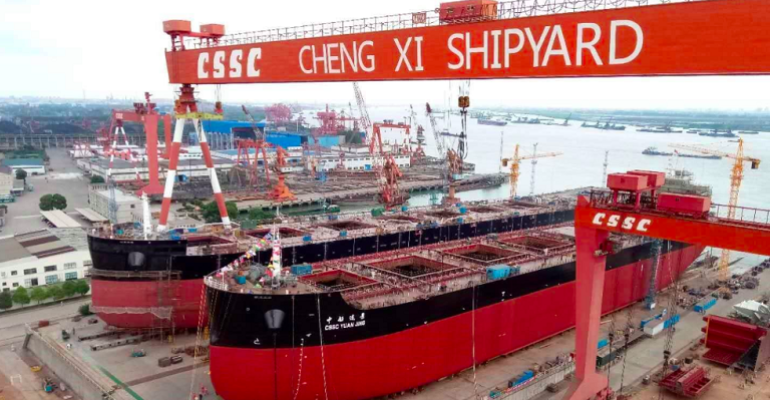Ship prices, in nominal terms, are now at their highest level since 2009. Further increases are likely, as raw material and energy prices continue to climb.
Newbuilding prices vary across ship types, Clarkson noted, with container ships climbing most. A 15,500 teu vessel now costs close to 50% more than it did 15 months ago, at the beginning of 2021. Capesize bulkers are up by almost a third, MR tankers by 21%, and LNG carriers by some 18%.
The price of steel is one factor, with Chinese plate costing more than $800 a tonne, up by $250 over the last 24 months. Although Clarkson expects lower contracting volumes this year due to higher prices, longer lead times, and uncertainty around future fuels, inflationary pressures on shipyard costs could yet push prices higher, the analysts said.
Many shipyards are now booking building slots for 2025 while the relatively small number of deepsea LNG shipbuilders are working on contracts for 2026. Clarkson estimates shipyard forward cover, measured in compensated gross tons, at 2.9 years, up from 2.4 years in November 2019.
Even without today’s inflationary pressures, there is no doubt that the ships of tomorrow will cost more. That’s because they will be designed with engines that can adapt to a changing bunker backdrop while many will also be fitted with energy saving technologies.
Copyright © 2024. All rights reserved. Seatrade, a trading name of Informa Markets (UK) Limited.
Add Seatrade Maritime News to your Google News feed.  |

